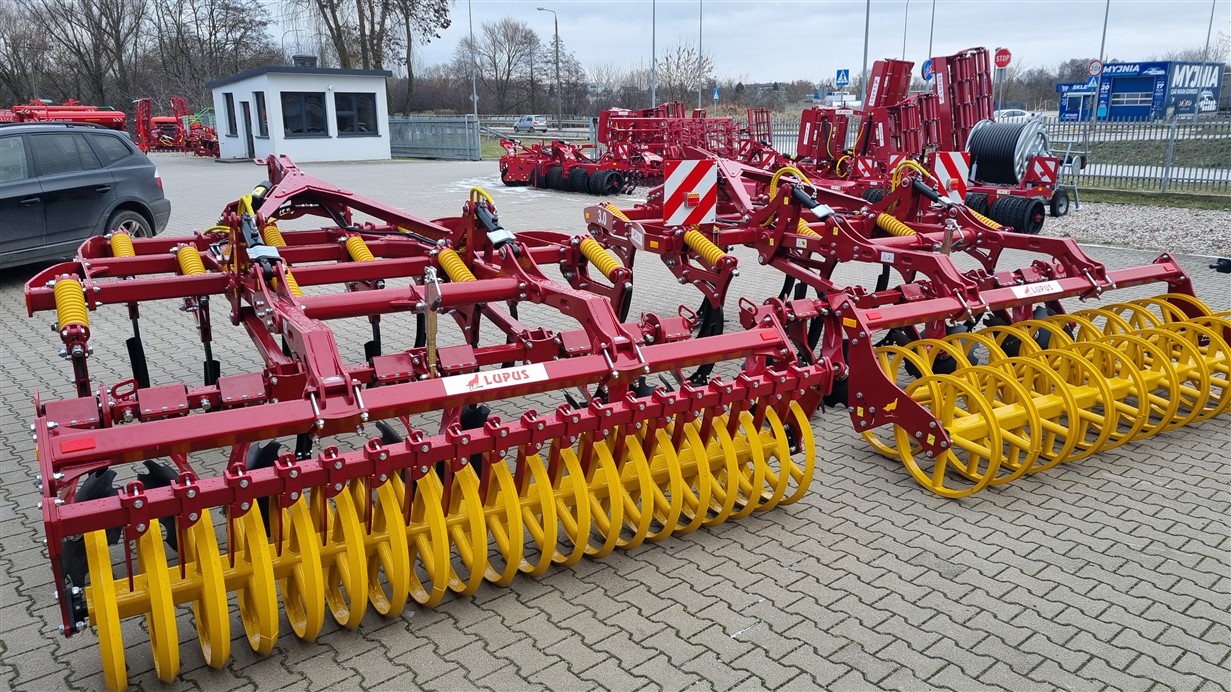
News
Advantages and disadvantages of ploughless cultivator – everything you need to know

Advantages and disadvantages of ploughless cultivator – everything you need to know
Ploughless cultivation, also known as conservation tillage, is gaining popularity among farmers around the world. It involves minimising soil disturbance by reducing or eliminating tillage altogether. Is this method right for your farm? In this article, we will discuss the advantages and disadvantages of ploughless cultivation to help you make an informed decision.
Advantages of ploughless cultivation
Better soil structure
Ploughless cultivation helps to preserve the natural structure of the soil. The lack of disturbance promotes the formation of beneficial micro-organisms that improve the soil structure and its ability to retain water.
Reduction of soil erosion
One of the most important advantages of plougless cultivation is the reduction of soil erosion. Without regular ploughing, the soil surface remains less exposed to rinsing and weathering.
Time and cost savings
Giving up ploughing means less fuel and machinery consumption, which translates into lower operating costs. In addition, less time spent in the field means greater labour efficiency.
Increased water retention
Soil that is not regularly ploughed has a better ability to retain water. This can lead to better performance in dry seasons and a reduced need for irrigation.
Improving soil health
Ploughless cultivation promotes the growth of natural soil flora and fauna, which can lead to healthier soil and better crop yields in the long term.
Disadvantages of ploughless cultivation
Increased risk of disease and pests
Without regular ploughing, plant residues can remain on the soil surface, which can encourage the development of diseases and pests. It may be necessary to use additional plant protection products.
Need for specialised equipment
Ploughless cultivation requires the right equipment, such as ploughless cultivator, which can be expensive. Investing in new machinery can be a challenge for some farms.
Greater requirements for weed management
Without ploughing, weeds may have better conditions for growth. Additional methods of weed control, such as herbicides or mulching, may be necessary.
Longer transition period
Switching to plougless cultivation can take time before it brings its full benefits. The initial years can be difficult and yields may not be as high as with conventional cultivation.
Summary
Ploughless cultivation has many advantages, such as improved soil structure, reduced erosion, cost and time savings and increased water retention. However, it also comes with challenges, such as increased risk of diseases and pests, the need to purchase specialised equipment and greater requirements for weed management.
Before opting for plougless cultivation it is worth carefully weighing up all the advantages and disadvantages and adapting the strategy to your farm’s specific conditions. That way, you can maximise the potential of this modern cultivation technique.
Which machine should I choose for ploughless cultivation?
Farmers looking for a reliable and efficient ploughless cultivator should consider the Lupus plouhless cultivator. Its robust design and adaptability to different working depths make it an ideal choice for both shallow and deep cultivation. The LUPUS ploughless cultivator ensures maximum utilisation of the land’s potential, promoting sustainable and efficient farming.
Please call us by phone to arrange the details +48 798 988 179
Przeczytaj nasze inne wpisy:
Najlepsze praktyki użytkowania brony talerzowej na różnych typach gleby
Jakie są korzyści z używania brony talerzowej w rolnictwie?
Talerzówki 3m – jaką wybrać do swojego gospodarstwa
Agregat bezorkowy 3m dlaczego produkcji LUPUS?



